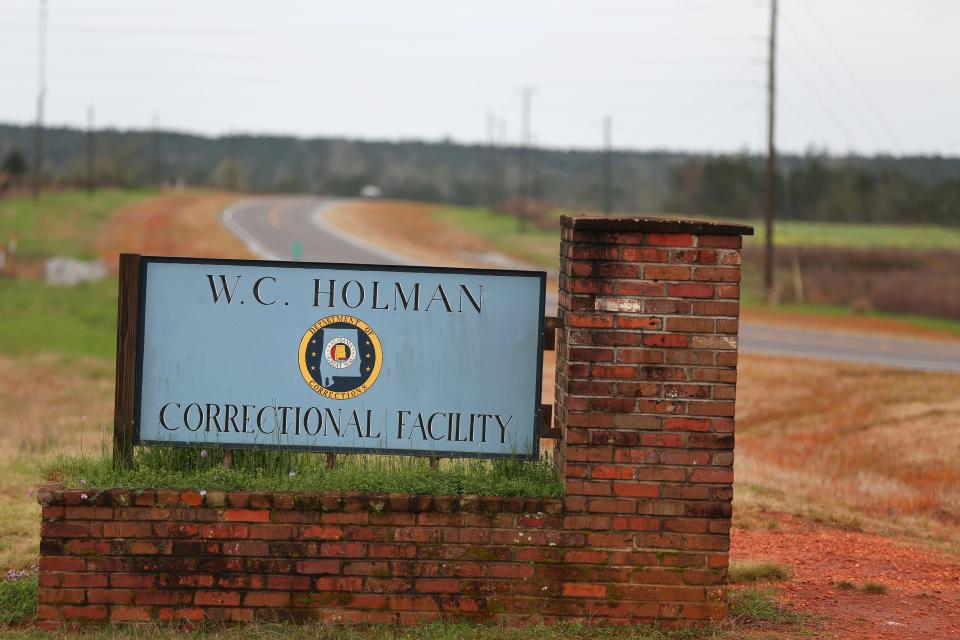Death row: 43 Alabama inmates may face nitrogen gas executions
More than a quarter of all inmates currently on Alabama's death row have chosen nitrogen gas as their execution method, and those decisions were made before the state used the gas for the first time to kill Kenneth Eugene Smith, state officials say.
Smith, 58, was executed Thursday night at the William C. Holman Correctional Facility in Atmore by nitrogen hypoxia, a method never before used on humans. There are 164 inmates on death row, according to data from the Alabama Department of Corrections. In a Friday morning news conference, Alabama Attorney General Steve Marshall said 43 inmates have chosen the method.
Inmates chose the method before the state established protocol for nitrogen hypoxia execution and before Smith was put to death. The prison system did not respond an email asking whether inmates will be given the opportunity to change their decision from nitrogen hypoxia to lethal injection or electrocution, the other two legal means of execution in Alabama.
During the execution, Smith writhed and convulsed for two to four minutes before apparently passing out after the gas began running into his full face mask. While apparently unconscious, he continued to gasp for air and contort for another two minutes. In legal proceedings held before the execution, the AG’s office entered briefs saying Smith should lose consciousness in a matter of “seconds,” and death should occur in a matter of “minutes.”
The state has provided very little information about the nitrogen hypoxia process. In heavily redacted court documents the state wrote that the nitrogen would flow for 15 minutes, or five minutes after the vital signs of the inmate “flatlined,” whichever came first.
The gas apparently was administered beginning at 7:57 p.m., with Smith appearing to lose consciousness at 8:02 p.m. and taking his last breath at 8:07 p.m. The curtains to the witness room were drawn at 8:15 p.m.
He was pronounced dead at 8:25 p.m.
'Torture' vs 'textbook'
In a news conference following the execution, Department of Corrections Commissioner John Q. Hamm said Smith's reactions were "...nothing out of the ordinary."
"It appeared Smith held his breath for as long as he could, and struggled against his restraints," Hamm said. "This was expected."
Hamm said the gas ran “about” 15 minutes, but prison system officials have not commented on an exact time when the gas was being administered, or when Smith’s vital signs “flatlined.”
The method of execution was denounced by groups ranging from a coalition of Alabama faith leaders, to Amnesty International, to the United Nations, to the Vatican. Opponents stressed that it had never been used on a human being before.
The Rev. Jeff Hood, Smith’s spiritual advisor who was inside the death chamber at the time of the execution called it “torture” in a news conference held about an hour after the execution.
Marshall characterized the execution as “textbook” during a Friday news conference.
“As of last night, nitrogen hypoxia as a means of execution is no longer an untested method. It is a proven one,” Marshall said, extending an offer of help for states considering adopting the method. Marshall said he expects Alabama “will definitely have more nitrogen hypoxia executions.”
Attorneys for those inmates that have chosen nitrogen hypoxia as a method of execution have asked the court to order Alabama to turn over records and information about Smith’s execution. Litigation will almost certainly focus on Smith’s convulsions and movements during the execution.
“The state promised the world the most humane method of execution known to man. Instead, Mr. Smith writhed and thrashed before he died. No further executions should take place by this method until the events of this evening are examined by an independent body,” Assistant Federal Defender John Palombi, who represents death row inmates who requested nitrogen, said in a statement.

Smith's crime and sentencing controversy
Smith was convicted of capital murder on Nov, 14, 1989, in the murder-for-hire death of Elizabeth Sennett in Colbert County. She was the wife of the Rev. Charles Sennett, who hired Smith and his co-defendant to kill her in an effort to collect on her life insurance policy.
Charles Sennett was in debt at the time. Elizabeth Sennett was stabbed to death in her home. Charles Sennett committed suicide a few days after her death after it became apparent that investigators suspected his involvement.
Smith’s original conviction was overturned, and he was convicted of capital murder again in 1996.
The jury voted 11-1 to recommend a sentence of life in prison without the possibility of parole for Smith, but the judge ignored the jury’s recommendation and handed down the death sentence.
At the time, judges in Alabama could override the jury’s recommendation of life without the possibility of parole and enact the death sentence. The Legislature has since removed that power.
Alabama death row
White males: 79
Black males: 78.
Males of other races: Two
White females: Four.
Black females: One
Source: Alabama Department of Corrections
The Associated Press Contributed to this report. Contact Montgomery Advertiser reporter Marty Roney at mroney@gannett.com.
This article originally appeared on Montgomery Advertiser: Alabama death row: 43 inmates may face nitrogen gas executions

